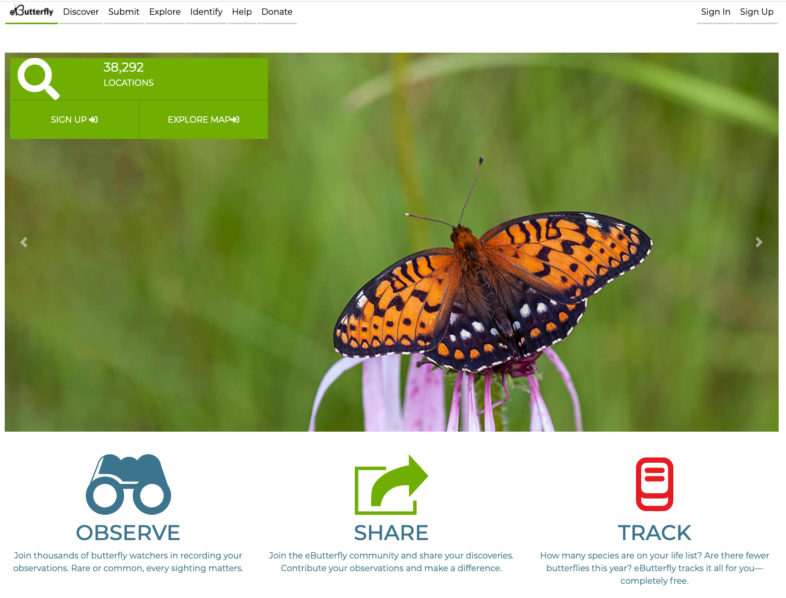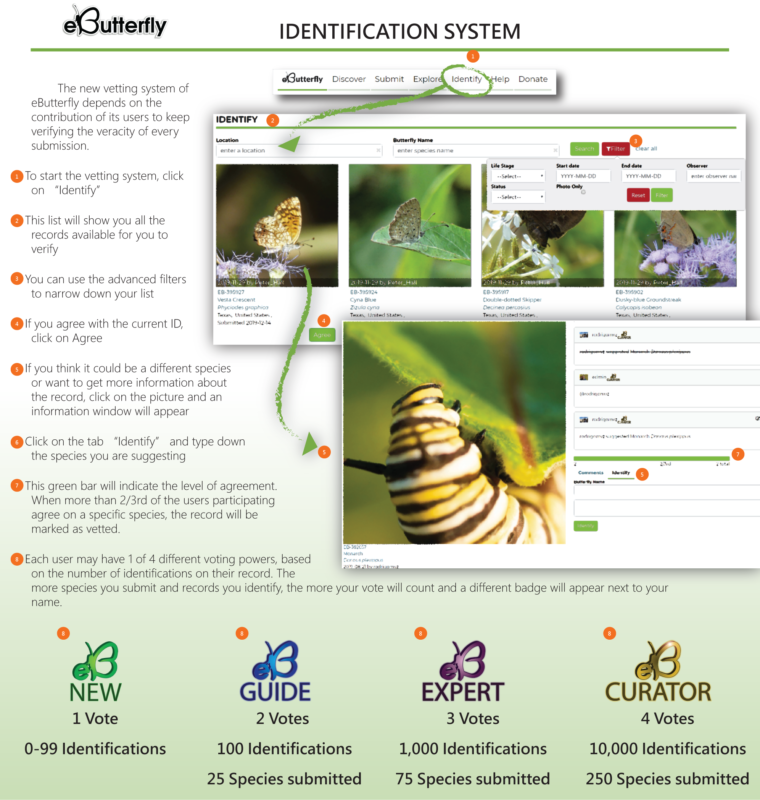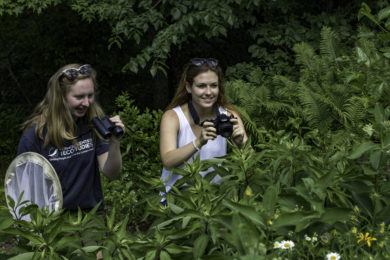
An international team of biologists and software engineers, including VCE’s Vermont Atlas of Life, has collaborated on an ambitious expansion of the eButterfly platform (found at e-Butterfly.org), offering scientists and naturalists powerful new tools to track and help conserve butterflies from Central America to the far reaches of the Arctic.
Covering more than 3,000 species—including many rarely studied—the e-Butterfly.org site offers free access for everyone to report, store, organize, and view vast amounts of data on butterfly distribution and diversity across the region. The site provides lists, photos, and real-time butterfly maps from the ever-growing reservoir of nearly 400,000 butterfly encounters submitted by more than 8,000 observers.
Soon to be translated into Spanish and French, eButterfly is expected to amass millions of records over the next few years.
“Now, with eButterfly expanding to Central America and the Caribbean, and translated into the region’s three most common languages, we will untap the full potential of eButterfly and provide a huge boost for butterfly conservation,” said Rodrigo Solis Sosa, human network and data coordinator for eButterfly.
eButterfly now relies on a peer-review system composed of a dedicated community of experts and enthusiastic participants to help verify each butterfly observation. Users examine the date, location, and photographs of each butterfly observation to ensure data quality.

“The beauty of this new vetting system is that it allows everyone, from butterfly watching novices to expert lepidopterists, to contribute and learn together,” said Maxim Larrivée, eButterfly founder and director of the Montreal Insectarium.
“We’re building a community of people who collaborate with scientists on butterfly conservation. It’s the best of the internet combined with the rigors of science,” said Kent McFarland, a conservation biologist at the Vermont Center for Ecostudies, a core partner in eButterfly.
“If you are curious about a sighting or think an observation photograph is particularly fascinating, you can now publicly comment on a checklist or observation, or send a private message to another user within eButterfly, allowing everyone to interact and learn more together.”

Surveying butterflies for e-Butterfly.org. / © K.P. McFarland
Every time butterfly watchers raise binoculars and cameras to record a butterfly sighting, they collect important data. Recording the number, date, and location of each and every butterfly, no matter how common or rare, may seem trivial, even repetitive—but this detailed information can be invaluable to science and conservation. Butterflies act as early warning signals for habitat degradation, climate change, and other ecological forces. Citizen science programs like eButterfly allow volunteers to submit checklists from anywhere, and can quickly amass large volumes of both historic and current observations.
A peer-reviewed study by researchers at the University of Ottawa compared eButterfly data to professionally-collected observations to measure the extent of new distributional and regional species richness information that opportunistic citizen science generates. eButterfly contributed new distributional information for ~80% of butterfly species, with volunteers detecting species significantly earlier each year than professionals.
“This really speaks to the ability and power of eButterfly’s citizen science approach,” said lead author Peter Soroye.
“eButterfly is the tool for any butterfly enthusiast,” said Larrivée, “you don’t have to be an expert to make a difference. Everyone can play a part, and it couldn’t be easier. Just sign up to join the eButterfly community and start contributing your butterfly discoveries.”

Great work!
Exciting news! Does eButterfly source observations from iNaturalist, or are the two datasets completely separate? As an iNaturalist user, in which dataset (iNat or eButterfly) would my butterfly observations be more useful to researchers?
Also, do eButterfly observations get sent to GBIF? Thanks!
iNaturalist data does not end up in eButterfly (same goes for birds on iNat and eBird). The programs collect quite different data. Both eButterfly and eBird are checklist based systems. That is, they both really like complete checklists of what you see along with information about your effort (time, distance traveled, etc). These added data allow us to use it in much more powerful ways statistically. Check out the science section of Vermont eBird as an example. That doesn’t mean that iNaturalist data (presence only) isn’t good. It is just that with more information we can do so much more with the data.
Will there be a checklist like eBird or do you have to type in a butterfly name to submit?